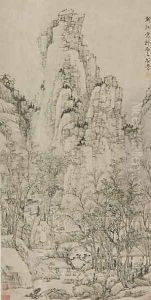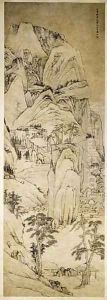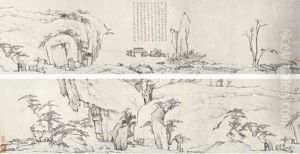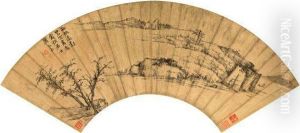Hongren Paintings
Hongren, also known as Jiang Tao and later as Hong Ren, was a Chinese monk-painter during the early Qing dynasty. Born in 1610 in Anhui Province in the late Ming period, Hongren became a monk following the fall of the Ming dynasty, an event that had a profound impact on his life and art. He adopted the monastic life and the name Hongren after this political upheaval, which saw the establishment of the Manchu-led Qing dynasty in 1644.
Hongren was a member of the Anhui (or Xin'an) school of painting, which favored sparse landscapes that reflected a more ascetic and introspective view of nature, as opposed to the highly detailed and ornamented style that had been previously popular. His style is characterized by its simplicity, with an emphasis on the spiritual rather than the material world. The Anhui school can be seen as a response to the tumultuous times during which Hongren lived, with the artists retreating into a world of nature and spirituality.
His work tends to be monochromatic and minimalist, using ink washes to create mountains and other natural forms with a subtle gradation of tone. Hongren's paintings often convey a sense of tranquility and timeless solitude. His brushwork is noted for its elegance and restraint, with every stroke deliberate and essential to the composition. Hongren's landscapes seldom feature human figures, and when they do, the figures are usually small and insignificant compared to the vastness of nature.
Despite his importance and influence, Hongren led a life marked by personal loss and political turmoil. Little is known about his patrons or the exact circumstances of his life as a monk. After his death in 1664, Hongren's style and approach to painting had a lasting impact on later generations of artists, making him one of the most respected figures in the history of Chinese landscape painting. His work was not only an expression of personal piety and artistic integrity but also a form of cultural resistance against the foreign Qing dynasty.



